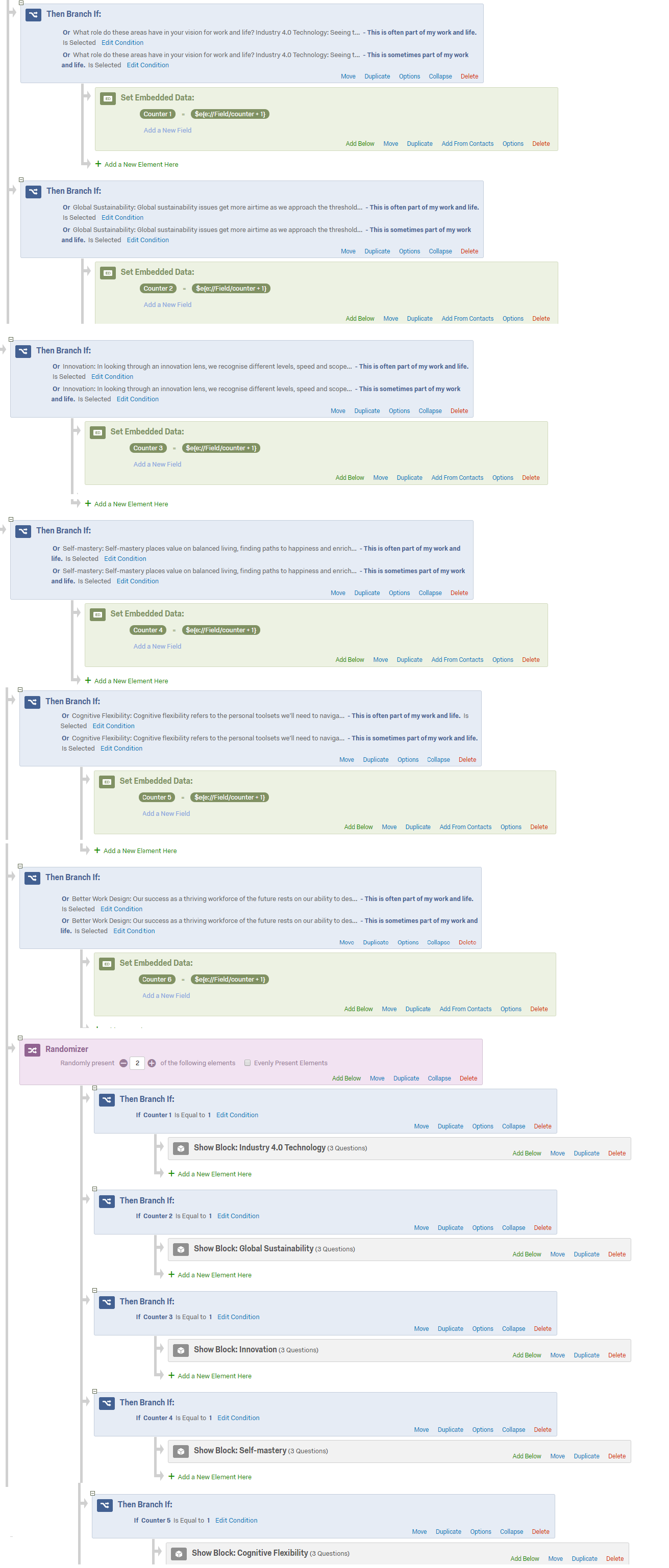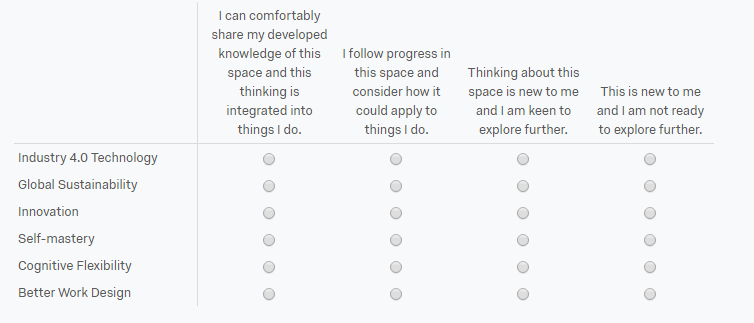Solved
Only randomizing certain questions where a condition is met (answer to parent question)
I have six questions, each has a subsequent question to be asked only IF the response meets a certain criteria. I only want a maximum of 2 of these subsequent questions to be asked. Where there are more than 2 of the six questions meeting this criteria the selection of the 2 subsequent questions should be randomised. Where there is 2 - those 2 should be asked, where there is 1 that 1 should be asked. Where there are 0 then 0 should be asked. I have tried a few different things. I am not great with Javascript but can try to work with examples.
Best answer by Scagas
Thanks all.
Sharing qualtrics instruction and have pasted my final that is working.
This is the solution where I have 6 statements and 4 choices in a matrix, I have a subsequent question for each statement however I only want to randomise display of a maximum of 2 subsequent questions and only if certain conditions are met for each statement, this means I might be randomising the display of permutations of 6, 5, 4, 3, 2, 1, or 0 criteria compliant subsequent questions:
Qualtrics Support Instruction:
Steps with screenshots for your visualisation:
1. Go to your Survey Flow
2. In the bottom right corner of the Block which entails the Matrix Table, click on Add Below
3. Select a Branch for the new element
4. Click add a condition
5. Select the question of the matrix table and in select choice choose the scale point 1 under the specific statement (see screenshot)
6. Click on the green plus sign to the right and insert the same for the scale point 2. After you have done that, make sure you change the logic from AND to OR (see screenshot). Then click ok
7. Now add a new element nested under the branch and choose Randomizer
8. Nest the Followup Blocks underneath (I suggest each follow up question has its own block, because you do not want to display all of them (see screenshot)
9. Now put in 2 in the Randomly present ... of the following elements (and if desired click on evenly present elements)! 10. Lastly, save your survey flow
10. Lastly, save your survey flow
 10. Lastly, save your survey flow
10. Lastly, save your survey flowEnter your E-mail address. We'll send you an e-mail with instructions to reset your password.



